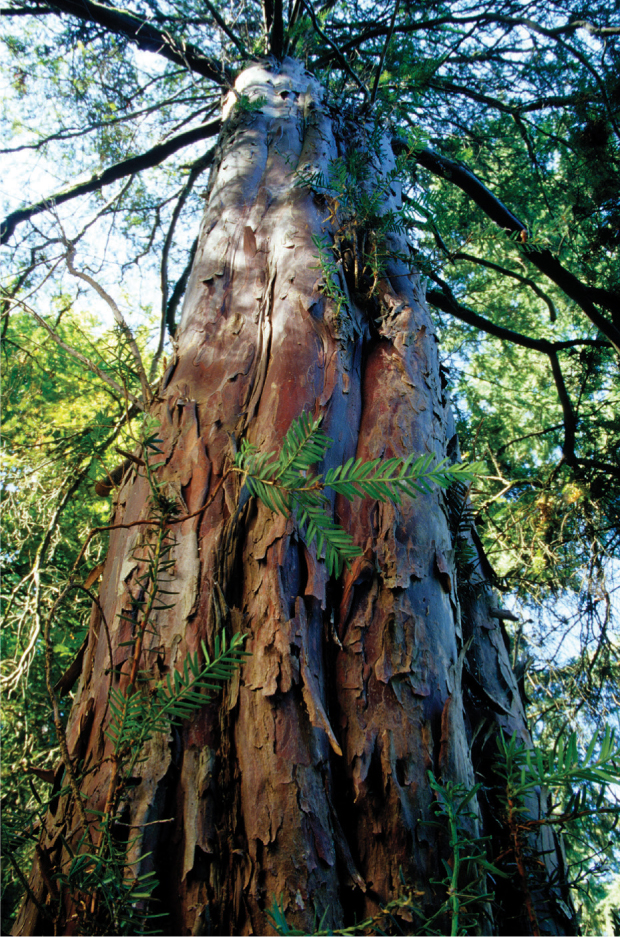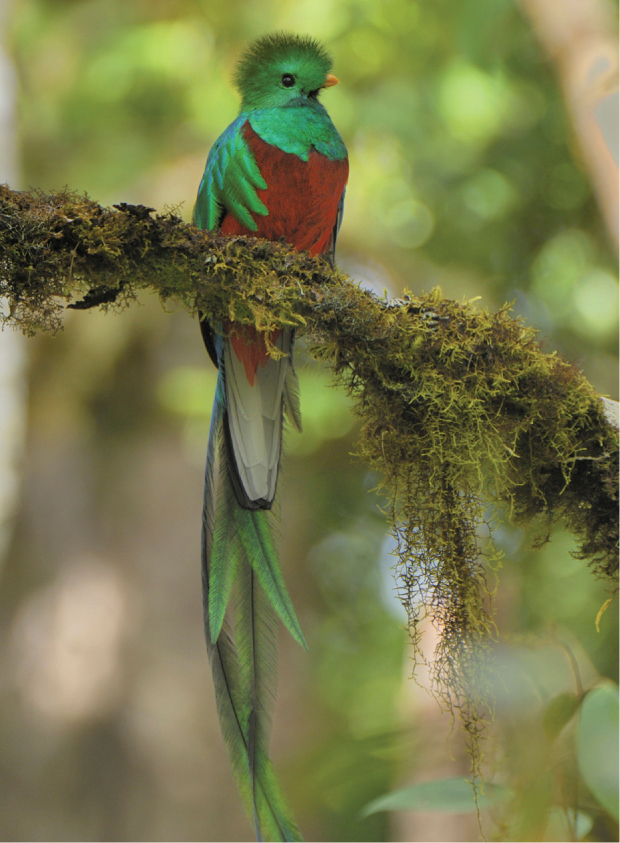The value of biodiversity arises from social, economic, and ecological considerations
Instrumental value of biodiversity A focus on the economic value a species can provide.
A case for conserving the world’s biodiversity can reflect a range of different values. For example, the instrumental value of biodiversity focuses on economic values that species can provide, such as lumber for building or crops for eating. In contrast, the intrinsic value of biodiversity recognizes that species have inherent value, in and of themselves, that is not tied to any economic benefit. Of course, species and ecosystems can simultaneously have both instrumental and intrinsic values.
Intrinsic value of biodiversity A focus on the inherent value of a species, not tied to any economic benefit.
Instrumental Values
The total benefit provided by biodiversity is difficult to estimate because much of the world’s biodiversity remains undiscovered and the values of each species and ecosystem can be difficult to estimate. However, researchers have attempted to do so. For example, the total economic benefit of biodiversity in the United States is estimated at $319 billion per year. For perspective, this is about 10 percent of U.S. annual gross domestic product. At the global level, estimates of the total benefit of biodiversity range from $3 trillion to $54 trillion. We can group the instrumental values of biodiversity into four categories of services: provisioning, regulating, cultural, and supporting.
Provisioning Services
Provisioning services are benefits of biodiversity that provide products humans use, including lumber, fur, meat, crops, water, and fiber. In many cases, plants and animals from the wild have been cultivated or domesticated and then selectively bred to enhance their valuable qualities. Provisions also include pharmaceutical chemicals that come from plants and animals; nearly 70 percent of the top 150 pharmaceutical drugs originated in chemicals that are produced in nature. A prominent example of the economic benefits of such a drug is the chemical Taxol, which is used to fight cancer. Today Taxol is synthesized in the laboratory, but it originally came from the Pacific yew tree (Taxus brevifolia) (Figure 23.1). This single chemical currently has more than $1.5 billion in annual sales around the world. Over the past 25 years, more than 800 natural chemicals have been identified in the search to provide treatments for everything from cancer to contraception and there is no indication that the pace of these discoveries is slowing down.

Provisioning services Benefits of biodiversity that humans use, including lumber, fur, meat, crops, water, and fiber.
Regulating Services
Regulating services Benefits of biodiversity that include climate regulation, flood control, and water purification.
Regulating services are benefits of biodiversity that include climate regulation, flood control, and water purification. For example, wetlands absorb large amounts of water and so prevent flooding from water runoff during rainy periods. The plants living in the wetlands also remove contaminants from the water and make it more suitable for drinking. The CO2 that is taken out of the air by producers on land and in the ocean is another regulating service. Of the 8 gigatons of carbon that are put into the air each year by human activities, about 4 gigatons are taken out of the air by producers, which reduces the effect humans have on global temperatures due to global warming.
544
Cultural Services
Cultural services are benefits of biodiversity that provide aesthetic, spiritual, or recreational value. For example, cultural services include the benefits that people obtain when they go hiking, camping, boating, or birdwatching. People pay to visit beautiful natural areas, such as the Florida Everglades in the United States or Banff National Park in Canada. Sometimes areas are preserved because income from tourists can exceed what would be received from clearing a forest or from using the land for housing and industry. Many tropical countries have capitalized on this attraction by establishing parks and support services for tourists. In Palo Verde National Park in Costa Rica, for example, monkeys and beautiful tropical birds draw tourists to areas where the species are protected (Figure 23.2). Diversity itself is often the attraction in tropical rainforests and coral reefs because these ecosystems contain hundreds of different species of trees, birds, corals, or fish.

Cultural services Benefits of biodiversity that provide aesthetic, spiritual, or recreational value.
Supporting Services
Supporting services Benefits of biodiversity that allow ecosystems to exist, such as primary production, soil formation, and nutrient cycling.
Supporting services are benefits of biodiversity that allow ecosystems to exist, such as primary production, soil formation, and nutrient cycling. As we have seen in Chapters 20 and 21, these processes are essential for the existence of species and ecosystems. There would be no ecosystems without producers that capture the energy of the Sun and then transfer it to all other trophic levels. Similarly, the formation of soil and the cycling of nutrients both play key roles in the persistence of existing ecosystems.
Intrinsic Values
In contrast to instrumental values, the intrinsic values of biodiversity do not provide any economic benefits to humans. Instead, people who place intrinsic value in biodiversity feel religious, moral, or ethical obligations to preserve the world’s species. However, it becomes very difficult to prioritize conservation efforts only by arguing that all species are intrinsically valuable. In reality, we can consider both instrumental and intrinsic values when deciding how to focus our conservation efforts.